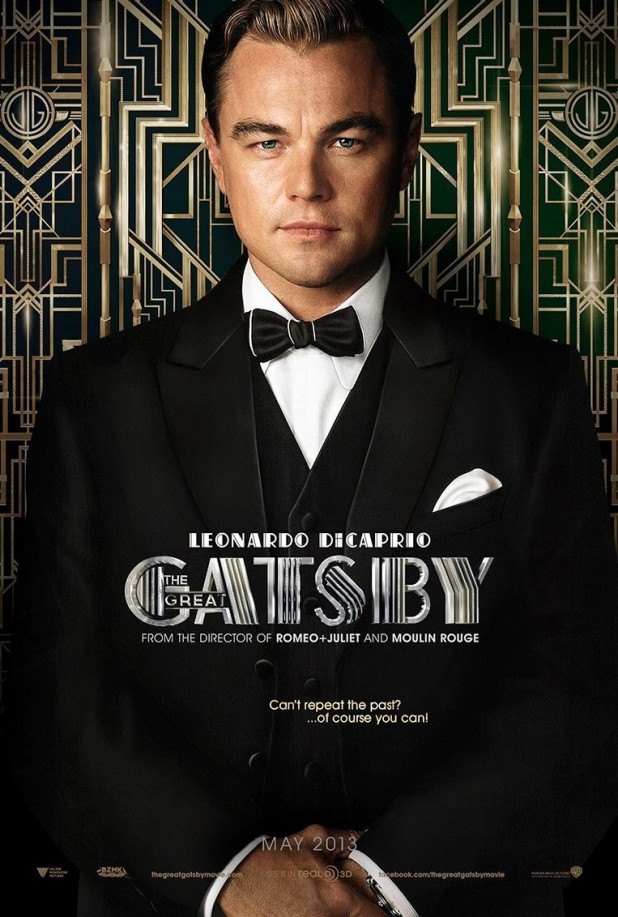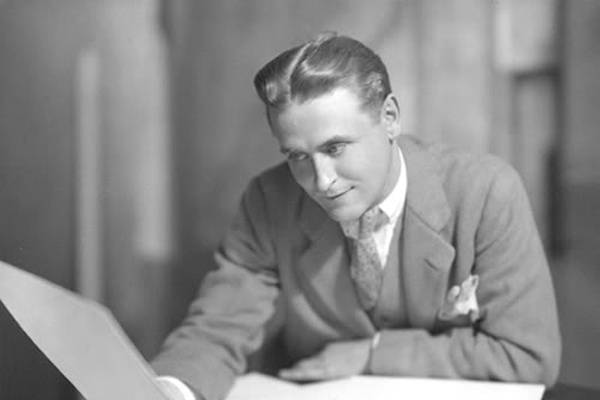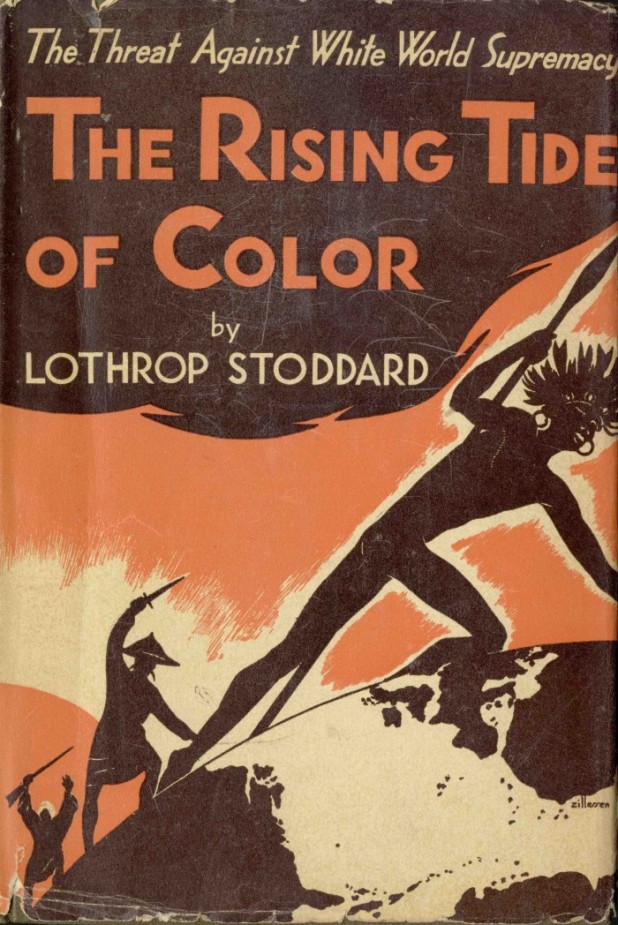Karl Radl
Semitic Controversies
September 13, 2015
The twentieth century American author and novelist F. Scott Fitzgerald has lately come back into literary fashion with a recent-ish film based on his most famous novel ‘The Great Gatsby’. The fascinating things about Fitzgerald are that his marriage to Zelda, his wife, caused him to drink away his literary profits as he coped with her increasing insanity.
In addition to the fact that Fitzgerald was very much a product of his era; working primarily in a time of glaring social inequality as well as a spiraling ‘clash of civilizations’ between so-called Liberal Democracy, Marxism and Nationalism. It was this time period that is echoed in his writing about spend-thrift millionaires as well as the glitz and glamour of upper class New York society.
We can see this in Fitzgerald’s own attraction to Marxism in 1929, which was the result of his dislike of the laissez-faire capitalism that characterized American society in the 1920s. (1) This flirtation with Marxism, and the election of Franklin Roosevelt as the US President, brought Fitzgerald into contact with growing number of leftist organizations in the United States. (2)
Despite this contact and his obsessive reading of the works of Karl Marx; Fitzgerald was never an intellectual believer in Marxism per se, but rather someone who wanted to believe it was true on an emotional level. (3) This is easily demonstrated by pointing out that Fitzgerald had left his Marxism behind by 1936; (4) at the beginning of very height of its popularity in the days of the ‘Popular Front’.
Conversely Fitzgerald also demonstrates a significant sense of nationalism when in his novel ‘This Side of Paradise’; he has one of his characters espouse the thesis of Lothrop Stoddard’s best-selling book ‘The Rising Tide of Color’ referring to it as Goddard’s ‘The Rise of the Colored Empires’. He has his main character point out that naturally blondes are superior to darker-skinned peoples and that as culture-bringers blondes have to work harder than non-blondes.
The reference is, of course, to Stoddard’s Nordic racialism. That this isn’t an attack on Stoddard is furnished from our knowledge that from at least 1921-1922; Fitzgerald talked privately about the racial problem of the existence of blacks in America. We also know from his private correspondence that he railed against the racial defilement of the Nordic race by blacks in Europe, which is probably a reference to the French use of black troops in the Rhineland and the resultant miscegenation from rape and loose morals, which brought the famous ‘Rhineland Bastards’ into existence. (5)
Further Fitzerald openly declared that America should have allowed Germany to crush the British and the French in the First World War to safeguard the racial purity of the Northern peoples. (6) These sentiments don’t sit well with his biographers today so they tend, as seems to be de rigueur these days, to minimize and edit them; when it clear that Fitzgerald was a fairly strident racialist and nationalist all of his life.
He despised the effete snobbishness of the New York upper classes, (7) but yet benefited by it financially in large part because he had no other source of income and he was always hard up for ready cash.
This, as you might expect, made a newly famous writer like himself; easy prey for the big names of Hollywood with jewish-owned studios (8) offering to buy the rights to screen his stories if he would write the scripts. Examples include Columbia Pictures who, in 1930, purchased the film rights, to be named ‘Cosmopolitan’, for his story ‘Babylon Revisited’ for $2,500 with another $2,500 on completion of the script. (9)
Columbia however refused to pay up whenever Fitzgerald produced an acceptable script (10) and this, quite understandably, embittered Fitzgerald against them. It didn’t help that he was on an insultingly low salary for Hollywood; (11) who were just trying to exploit his penury.
Fitzgerald’s experience with jewish-owned Hollywood outfit Twentieth Century Fox was little different. (12)
Indeed Fitzgerald seems to have had nasty experiences with jews and jewish-owned companies all of his career.
For example he believed that jewish theatre producer, George Kaufman, had plagiarized his own 1920 play ‘The Vegetable’ (directed by his jewish associate George Cohan) (13) to create Kaufman’s successful ‘Of Thee I Sing’. (14)
In another case Fitzgerald’s script for the film ‘Three Comrades’ was, in his view, simply wrecked by jewish director Joe Mankiewicz even if the film was itself a massive success. (15) This script wrecking included an anti-fascist plot (16) and was (surprise, surprise) being funded by jewish-owned MGM Corporation. (17)
Indeed few script writers had any love lost for Mankiewicz’s tampering and controlling nature; (18) so it comes as little surprise to learn that Fitzgerald heartily loathed him for the rest of his days. (19)
With such experiences with individual jews; it comes as even less of a surprise that Fitzgerald frequently attacked jews in his novels and short stories.
In his novel ‘The Beautiful and the Damned’; he refers to Yiddish (i.e. jewish) comedians as being boring and third rate, non-jews who date jews discover that they are actually boring creatures, that jewesses who ‘come out’ in society are looking to marry a fellow jew who is an upcoming financial broker and jeweler, that you can tell a jew just by looking at him as in the case of a ‘Semitic violinist’ and that jews are generally short and dark shopkeepers who stare out of their doors with ‘prideful and suspicious eyes’.
In an ex post facto hilarious aside Fitzgerald has the main character, Anthony Patch, refer to a jewish film mogul as being ‘half-baked’ and in need of being stuck in the oven again for another minute or so. Said film mogul is also stated to be corpulent, slimy and desperate to make influential society connections so he can ‘advance’ in the world.
Fitzgerald gets even more delightfully subversive when he refers to a jewess named Rachel; who is dark but very pretty, but her parents are converts to the Episcopalian Church from Judaism. This, Fitzgerald necessarily infers, is to provide her racial camouflage so she can gain access to non-jewish members of high society and she eventually marries one, a man named Richard Barnes, to make her racial camouflage complete.
Similarly in his best-known novel ‘The Great Gatsby’ Fitzgerald has one of his side characters refer to ‘a little kike’ who she almost married, because he relentlessly pursued her. The subtext to this statement is that Fitzgerald is promoting the idea that jewish men lust after and relentlessly pursue non-jewish women rather than their own.
One of the other side characters actually marries the jew concerned. She relates to the reader that he claimed to be a gentleman and a writer, but it turned out that he lives over a garage with her and ‘borrowed’ a suit to get married in (which he didn’t tell his bride to be or anyone else) and then tried to not give it back when the owner came and asked for its return.
In other words Fitzgerald is urging his readers not to marry jews, because they are serial liars and are only after feeling superior for sexually conquering a non-jewish woman.
Fitzgerald also describes a jewish side character as being small, flat-nosed with hairy nostrils and tiny eyes. He is said to have jewelry made of human teeth and to have fixed the 1919 World Series, but hasn’t been prosecuted because, while everyone knows it was his doing, the police cannot find any evidence to actually do anything about it.
We see a similar reference to jewish power by Fitzgerald when he lists the names of people closely involved in Hollywood and they are nearly all, obviously, jewish in origin.
Fitzgerald is clearly here depicting the jews as a racially alien, fundamentally evil and diabolically clever people; who will stop at nothing to achieve their ends.

This reaches its most obvious form in Fitzgerald’s short story ‘May Day’ when a black-haired jewish agitator is haranguing a crowd of poor workers and former soldiers advocating pacifism and claiming that the First World War was a capitalist conspiracy. The jew is then called a ‘god damned Bolshevik’ by a blonde worker and former soldier who pulls him down from his soap box and the non-jewish crowd punch and kick the jewish agitator till he is broken and bleeding.
From this we can draw two conclusions; the first is that Fitzgerald saw the world in racial and nationalist terms as a struggle between both races and classes, which envisioned jews and blacks as the primary enemies of the Nordic race.
The second is that Fitzgerald viewed the jews as an especially dangerous enemy to America who were responsible for both international capitalism and communism. The danger they presented to America was both on the level of their power and influence as well as their use of racial camouflage in order to attain positions of influence, which they would mercilessly exploit.
In other words, and contrary to the impression of him given by his biographers, F. Scott Fitzgerald saw the jew as the most dangerous enemy that America was facing and wrote about it in his voluminous fictional work.
References
(1) Henry Dan Piper, 1965, ‘F. Scott Fitzgerald: A Critical Portrait’, 1st Edition, The Bodley Head: London, p. 175
(2) Andre le Vot, 1983, ‘F. Scott Fitzgerald: A Biography’, 1st Edition, Allen Lane: London, p. 270
(3) Ibid, p. 271
(4) Piper, Op. Cit., p. 248
(5) Le Vot, Op. Cit., p. 94
(6) Ibid.
(7) Piper, Op. Cit., p. 176
(8) On this see Neil Gaber, 1989, ‘An Empire of their Own: How the Jews Invented Hollywood’, 1st Edition, W. H. Allen: London
(9) Piper, Op. Cit., p. 255
(10) Ibid, p. 256
(11) Le Vot, Op. Cit., p. 347
(12) Piper, Op. Cit., p. 256
(13) Le Vot, Op. Cit., p. 120
(14) Piper, Op. Cit., p. 96
(15) Ibid, p. 246
(16) Le Vot, Op. Cit., p. 326
(17) Ibid, p. 328
(18) Ibid, p. 327
(19) Ibid, p. 328

